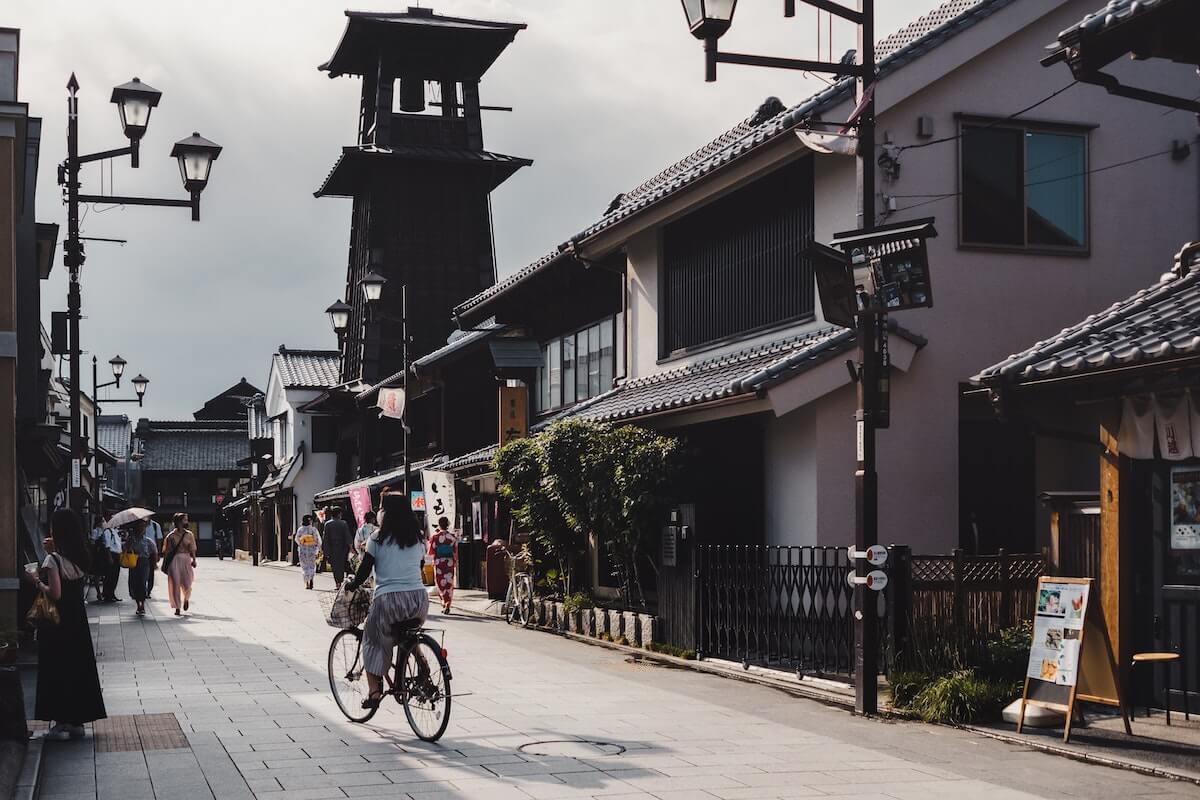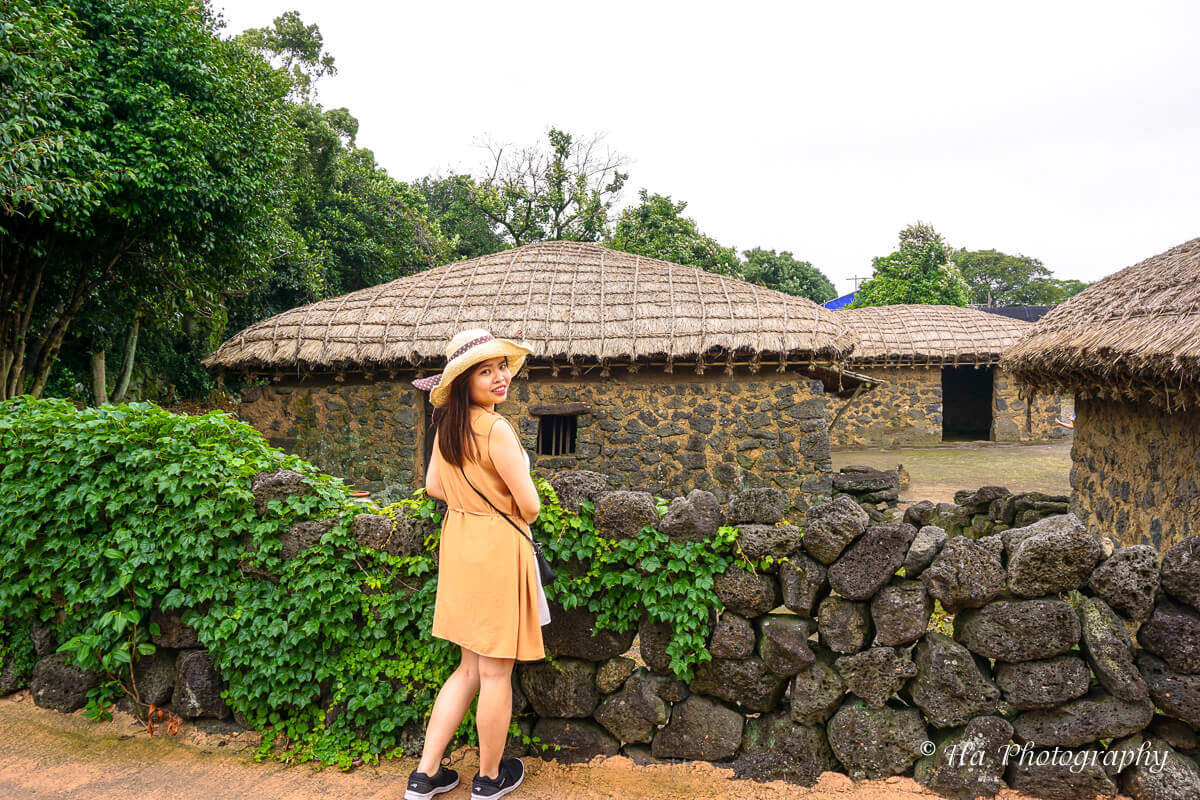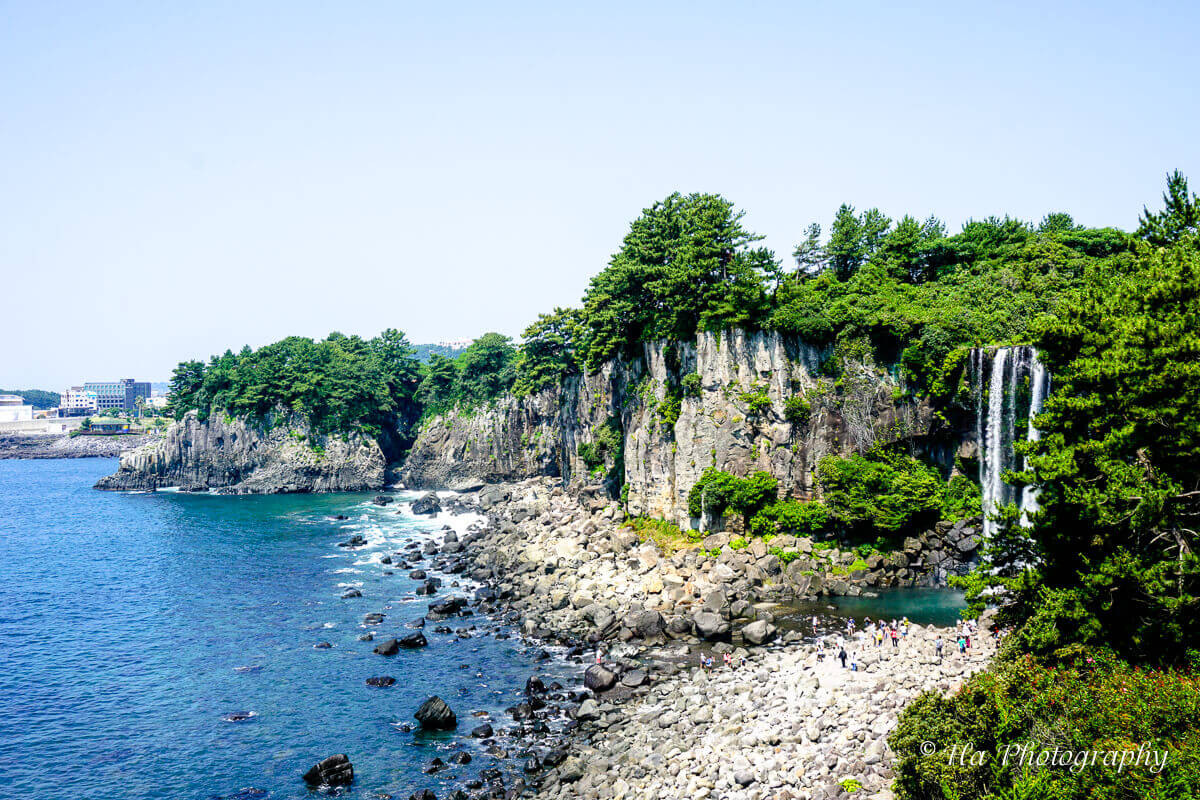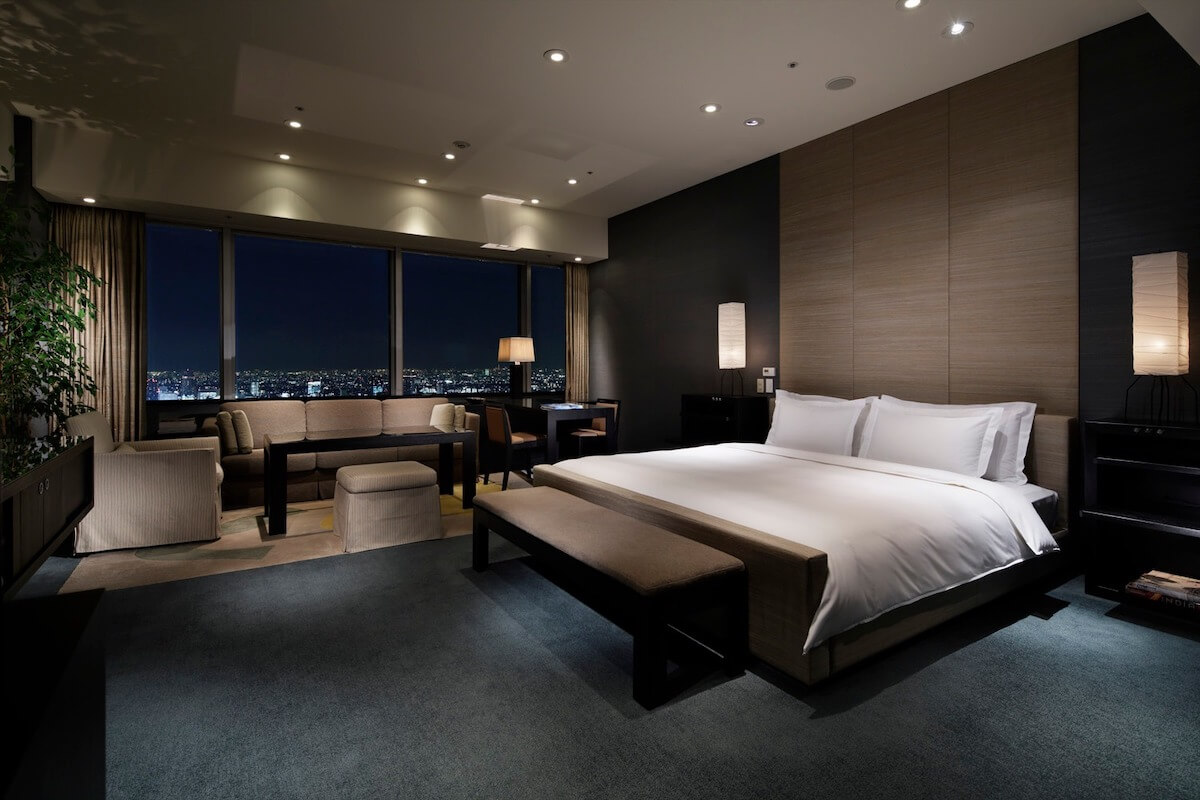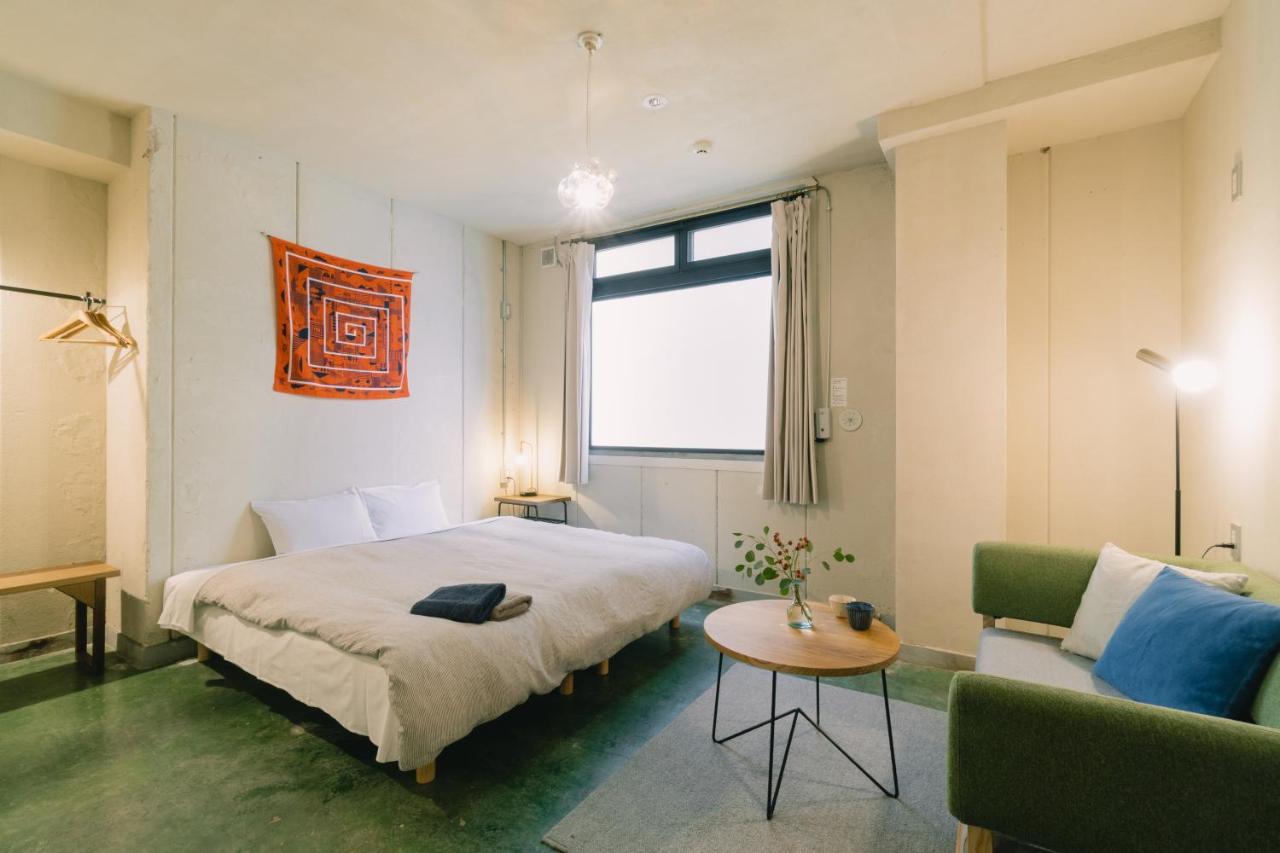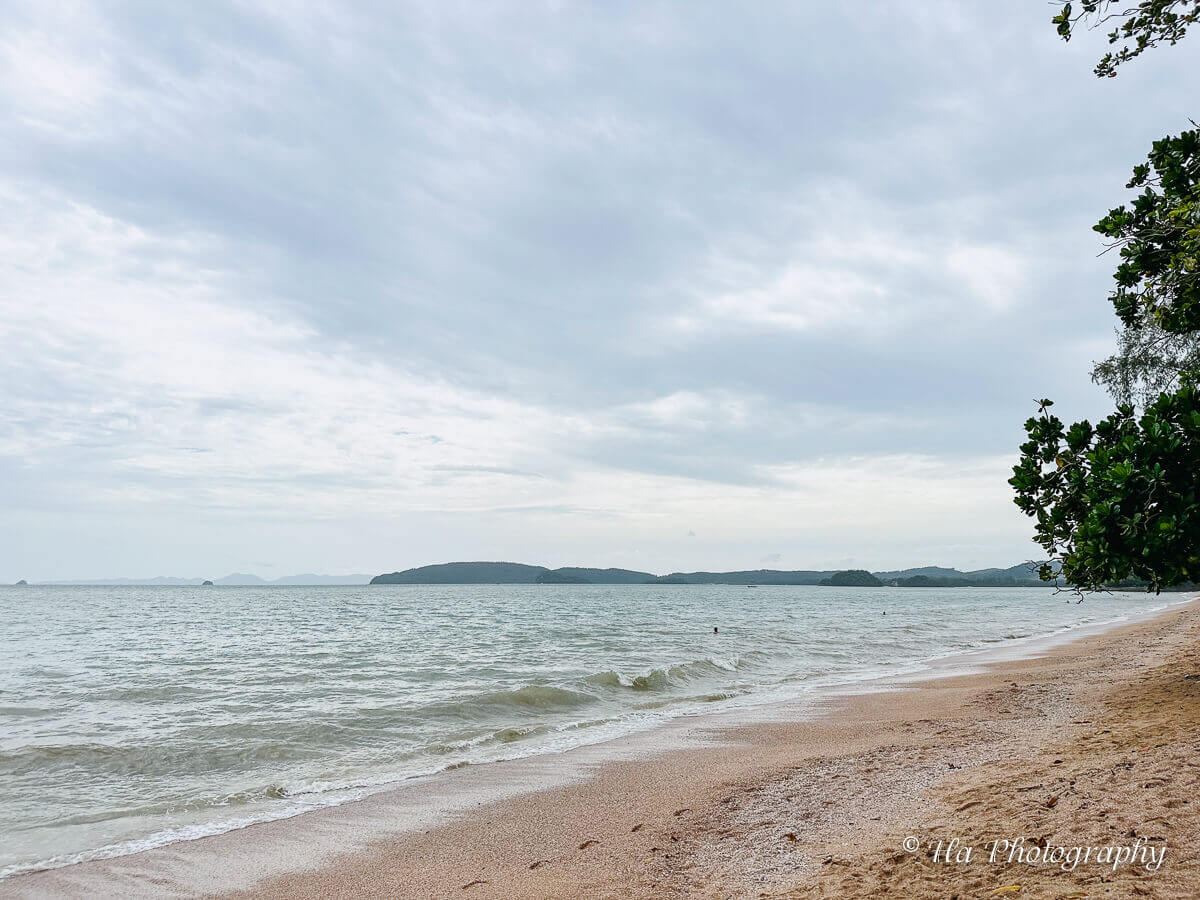23 Amazing Things To Do In Hiroshima, Japan
Hiroshima is a beautiful blend of history, culture, and natural beauty. This city, while marked by a tragic past, has risen from the ashes to reveal a city full of life, color, and charm.
From delectable food experiences to stunning landscapes, Hiroshima has an experience waiting for everyone. In this article, I’ll share amazing things to do in Hiroshima and tips to plan your trip.
Wander Okonomimura food theme park
If there’s a place in Hiroshima that makes my taste buds sing with joy, it’s Okonomimura.
This foodie paradise is a theme park dedicated to the city’s famous Hiroshima-style okonomiyaki.
Unlike the Osaka version, which is mixed, the Hiroshima-style okonomiyaki is layered, adding a unique depth to each bite.

After having your fill of okonomiyaki, don’t forget to try other regional delicacies, like Tsukemen (dipping ramen) and Hiroshima-style yakisoba.
Grab a seat at the counter and watch the chefs work their magic on the hot griddles! For me, it’s the perfect way to spend an evening in Hiroshima.
Tips: I highly recommend getting Hiroshima Pass to get around easily. With this pass, you can take unlimited rides on streetcars, buses, and the Miyajima Ferry.
Explore Hiroshima Castle
Hiroshima Castle is an impressive structure that embodies the resilience of this city.
Rebuilt after the atomic bomb devastation, it’s a perfect replica of the 16th-century original.
One of my favorite activities is exploring the five main keep floors, each offering a unique insight into Hiroshima’s history and feudal Japan’s samurai culture.

The top floor holds a special treat. It provides an unobstructed view of Hiroshima City’s sweeping panorama, especially magical during the cherry blossom season.
Also, don’t miss the surrounding gardens and moats.
I love the peaceful walk around the castle grounds, spotting beautiful koi fish in the water and basking in the serene atmosphere.
Try Japanese traditional archery
One of the best things to do in Hiroshima is practicing Kyudo, the art of Japanese archery.
More than just shooting arrows, Kyudo is a form of moving meditation and aims to cultivate the mind and spirit.
I highly recommend taking a archery class at a local dojo, where a seasoned instructor patiently guide you through the process.
From the proper way to hold the bow to the right posture for releasing the arrow, each step is infused with a profound sense of mindfulness.
The moment you hit the target for the first time is indescribable. So, if you’re looking for a unique cultural experience in Hiroshima, give Kyudo a shot.
Stroll Miyajima Machiya Street
There’s a certain magic to wandering down the historic Miyajima Machiya Street.
Nestled on Miyajima Island, this street brims with traditional Japanese houses, crafts shops, and eateries, offering a sensory journey through Hiroshima’s rich culture and history.
The wooden facades of Machiya (traditional townhouses), some of which have been standing for centuries, represent a time when artisans, merchants, and samurai roamed these narrow lanes.

I especially love popping into the various craft shops, where you can see skilled artisans at work.
You’ll find beautiful souvenirs, like intricate woodwork, delicate ceramics, and colorful textiles.
When your stomach starts rumbling, head to one of the many food stalls.
Miyajima is famous for its grilled oysters and momiji manju (maple leaf-shaped cakes filled with red bean paste), both of which are must-tries.
Also, don’t miss out on a stroll along the waterfront, especially during sunset when the Itsukushima Shrine’s iconic torii gate appears to float on the crimson-streaked waters.
Be amazed at Itsukushima Jinja
The sight of the iconic floating torii gate, seemingly suspended on the high tide, is one of Japan‘s most emblematic images and a UNESCO World Heritage site.
Upon closer look, you can marvel at the shrine’s intricate woodwork, stunning in its detail and aesthetic value.
The brilliant vermilion hue, often associated with purity in the Shinto religion, makes the shrine even more charming.

The blend of its color with the blue of the sky and sea renders a mesmerizing sight that stays etched in your memory forever.
For the best experience, I highly recommend planning your visit during high tide.
It’s at this time that the gate appears to be floating, and its reflection shimmers on the water’s surface, creating a mirrored spectacle of majesty.
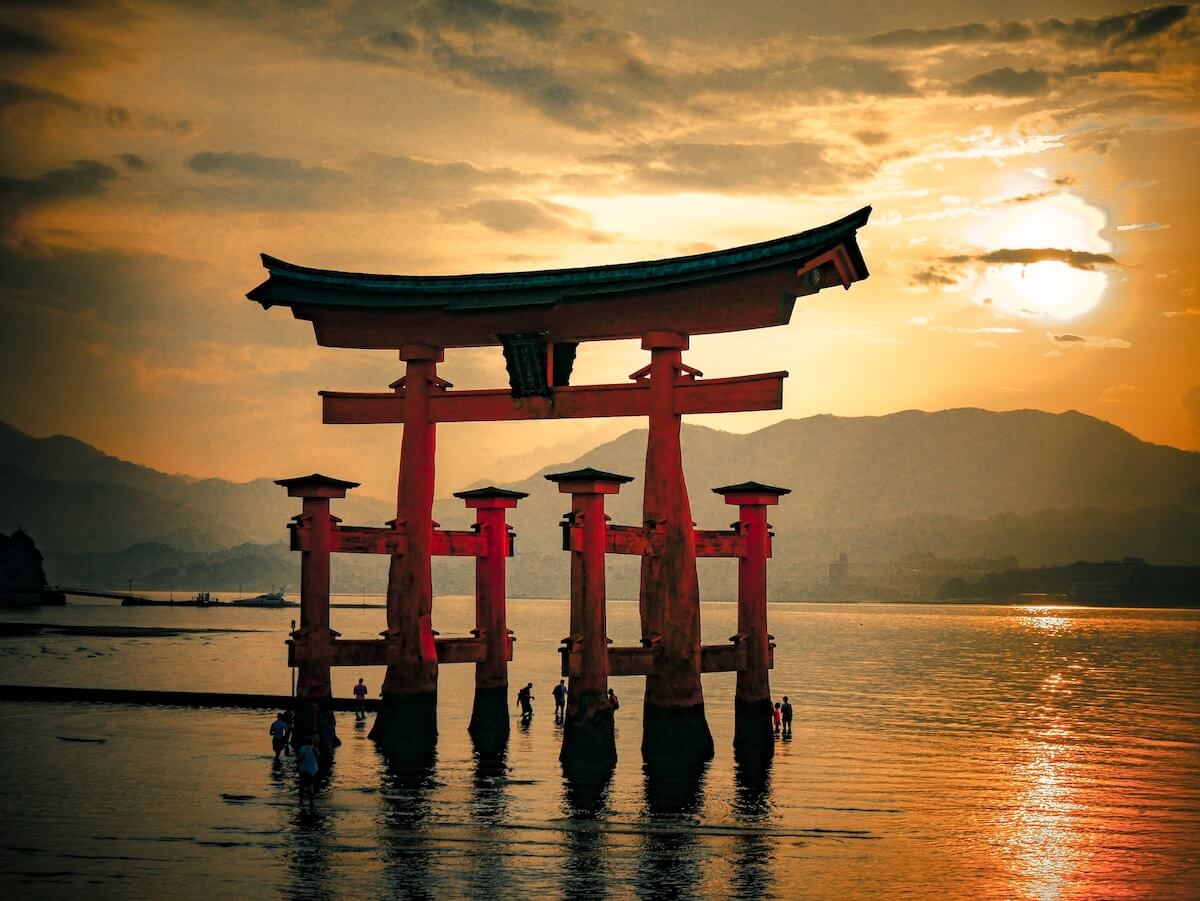
It’s a perfect backdrop for photos, especially if you want to evoke the ethereal charm of Japan.
If you linger until evening, the shrine, illuminated against the backdrop of the setting sun, offers a different yet equally magnificent view.
Participate in Japanese tea ceremony
If you’re seeking a tranquil experience in Hiroshima, participating in a traditional Japanese tea ceremony should be at the top of your list.
As an ancient ritual that symbolizes harmony, respect, purity, and tranquility, the tea ceremony is much more than just preparing and drinking tea—it’s a spiritual journey that engages your senses and encourages mindfulness.
Typically conducted in a tearoom or teahouse, the ceremony embodies the Japanese principle of ‘ichi-go ichi-e’ (one time, one meeting). It’s a concept that encourages cherishing each moment as it will not occur again.
The tearoom itself is a place of peace, with minimal and natural decor that reflects the ceremony’s ethos of simplicity and calm.
Many tea houses in Hiroshima also offer explanations and instructions during the ceremony, helping you understand the significance of each step, the symbolism, and the philosophy behind it.
I’ve taken tea ceremony classes in university and participated in several tea ceremony sessions in Japan, and every time was memorable.
It was interesting to see the tea master meticulously clean the tools, whisk the matcha, and serve the tea.
Every movement is precise, deliberate, and harmonious, demonstrating years of practice and dedication.
Discover artistry in Calligraphy
Taking a Japanese calligraphy class was one of my most rewarding experiences in Hiroshima.
This traditional art form, known in Japan as Shodo, involves writing kanji (characters used in Japanese script) with a brush and ink.
In Hiroshima, you can find many workshops catering to beginners and experienced learners.

You’ll get to know the different types of brushes, the right way to hold the brush, the process of making ink, and the art of drawing each stroke to form a character.
In my experience, practicing calligraphy is almost meditative.
The rhythmic motion of the brush, the scent of fresh ink, and the sensation of writing on rice paper create a calming atmosphere that helps you focus and relax.
Also, seeing a character come alive under your brush is incredibly satisfying.
Experience tradition and comfort at a Ryokan
Imagine walking into a tranquil space, slipping into a comfortable yukata (casual summer kimono), sleeping on a plush futon spread out on tatami mats, and waking up to a delectable Japanese breakfast.
That’s what a typical day looks like when you stay at a ryokan, a traditional Japanese inn.
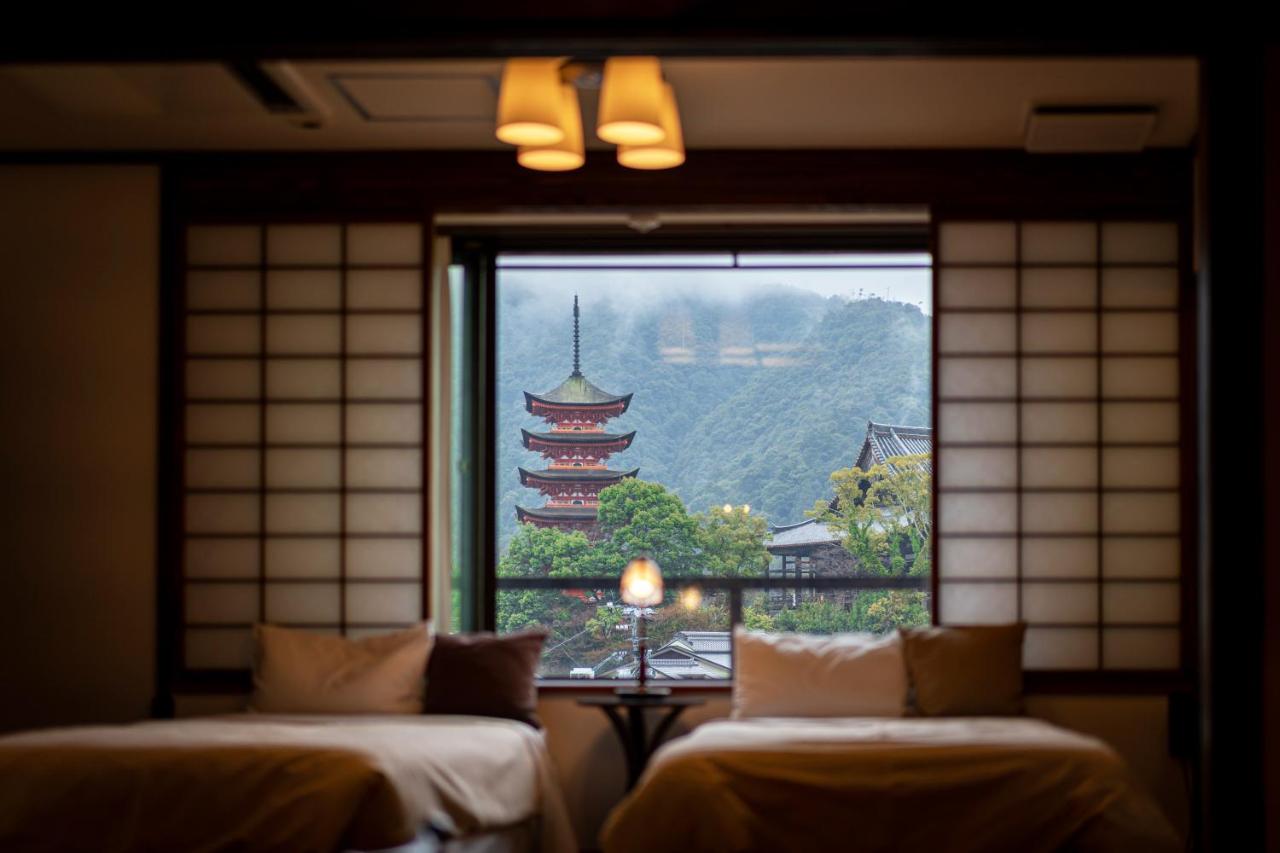
Staying at a ryokan on Miyajima Island was one of my favorite cultural experiences in Hiroshima.
Plus, these ryokans often come with scenic views of the surrounding landscape.
I particularly enjoyed the traditional multi-course dinner, known as kaiseki, featuring local and seasonal specialties prepared with great care.

And let’s not forget the onsen experience (hot spring bath).
Usually segregated by gender, these communal baths are a quintessential part of the ryokan experience.
Soaking in the hot spring water melts away your fatigue, making you feel refreshed and rejuvenated.

Ride Hiroden Streetcar
There’s something nostalgic about riding the Hiroden Streetcar.
Operating since 1910, these streetcars take you on a scenic journey through Hiroshima’s bustling streets and tranquil neighborhoods. It’s a charming window into the city’s past and present.
The streetcars connect many of Hiroshima’s popular attractions, including Hiroshima Peace Memorial Park, Hiroshima Castle, and Miyajima Island.

Each ride offers a new perspective on Hiroshima, from its vibrant cityscape to the tranquil scenery of its outskirts.
The retro interiors of the streetcars add to their charm, transporting you to a bygone era.
But what really makes these rides special is the opportunity they present to observe local life.
Whether it’s watching a student engrossed in a book, an elderly couple sharing a quiet moment, or a local hurrying to work, each ride tells a unique story.
Equipped with an English-speaking announcement system and route information, the Hiroden Streetcar system is also quite foreigner-friendly.
For a more convenient experience, I recommend getting a Hiroshima Pass, which allows unlimited rides for the day. Please note that the streetcars can get busy during rush hours, so plan your travel accordingly.
Savor Hiroshima delicacies
For a food lover like me, exploring Hiroshima’s culinary scene was a treat.
From local delicacies to comfort food and traditional drinks, you’ll be introduced to various flavors that reflect the city’s heritage and character.
Hiroshima is particularly famous for its style of okonomiyaki, a savory pancake loaded with cabbage, noodles, egg, and a variety of toppings.
I found it a tasty mix of textures and flavors, and watching it being prepared on a hot teppan grill was a spectacle in itself.
Hiroshima is also known for its oysters, which are large and full of flavor. Whether raw, grilled, or served in a hot pot, they’re a must-try.
And let’s not forget about sake, the iconic Japanese rice wine. Hiroshima’s mild climate and pure water make it ideal for sake production, and you’ll find plenty of opportunities to sample different types.
Join the Hiroshima food tour
Hiroshima boasts a rich food culture, and joining a food tour is an excellent way to dive into it.
Food tours are usually led by local guides who are passionate about their city’s food culture.
They’ll take you to various eateries, markets, and food stalls, offering insider tips and information about the local food culture and traditions.
As you indulge in the delicious cuisine, you’ll also learn about the story behind each dish, the ingredients used, and how they’re prepared.
But the best part about joining a food tour is to connect with the locals and make new friends!
Food brings people together, and there’s no better way to understand a culture than by sharing a meal with its people.
By the end of the tour, you’ll have a satisfied belly and a deeper appreciation for Hiroshima’s food culture.
Plus, you’ll likely have picked up some great recommendations for the rest of your stay.
Master the art of Japanese cooking
As someone who enjoys cooking, I found taking a cooking class in Hiroshima to be an excellent experience.
Most cooking classes in Hiroshima offer hands-on experience in preparing traditional Japanese dishes such as sushi, tempura, and miso soup.
Under the guidance of experienced chefs, you’ll learn about the unique ingredients used in Japanese cuisine, the proper cooking techniques, and the philosophy behind the art of cooking.
The classes are typically held in small groups, making for a friendly, interactive environment. And, of course, the best part was getting to savor your creations at the end!
You can also take the recipes home with you to recreate a taste of Hiroshima in your kitchen!
Learn about Hiroshima’s dark history
Even though Hiroshima’s history has been marked by the devastating atomic bombing of 1945, it’s fascinating to see how the city has transformed this painful past into powerful symbols of peace and resilience.
Let’s take a stroll around the Atomic Bomb Dome, one of the few structures that survived that tragic day.
What used to be a lively hub of industry is now a skeletal structure that silently echoes Hiroshima’s past.
But more than that, it’s a strong statement of the city’s unwavering determination to bounce back.

Check out the Hiroshima Peace Memorial Museum too. It’s filled with pictures, personal accounts, and remnants from the bombing day that narrate a significant part of Hiroshima’s history.
It’s a gripping tale, one that offers real insight into the city’s past and its journey to the present.
Also, find some quiet time at the Hiroshima Peace Memorial Park.
There, amid the serenity, you’ll find the Children’s Peace Monument. This special spot is encircled by thousands of paper cranes, each one a silent testament to hope and a heartfelt tribute to the young lives lost.
Trek along the Minochi River
For outdoor enthusiasts, a trek along the Minochi River offers an unforgettable adventure in Hiroshima’s stunning natural landscapes.
This was one of most popular outdoor activities in Hiroshima – a journey that combine history, nature, and tranquility.
The trek can be challenging, as it involves several hours of hiking, but the breathtaking views of the river, the surrounding mountains, and the lush greenery make every step worth it.
You’ll also come across historical sites and natural hot springs as you navigate the paths.
The trek is particularly beautiful during the cherry blossom season. Imagine walking along a riverbank flanked by cherry trees in full bloom, their delicate pink blossoms creating a mesmerizing canopy overhead.
While on the trek, remember to pack plenty of water and snacks, wear sturdy shoes, and be prepared for unpredictable weather.
The stunning vistas you encounter will make the journey well worth your effort!
Hike Mt. Futaba
If you love hiking and are looking for a challenge, hiking up Mt. Futaba is a must-do in Hiroshima.
This popular hiking destination offers a robust outdoor experience with the promise of spectacular views as your reward.
As you navigate the paths, you’ll be surrounded by lush, verdant greenery.
The ascent is moderate to challenging, but even if you’re not an experienced hiker, the stunning scenery and tranquil ambiance make the journey enjoyable.
At the summit, you’ll have a bird’s eye view of Hiroshima’s cityscape, the sprawling sea, and the surrounding mountains – a vista that will surely take your breath away.
The satisfaction of reaching the top, coupled with the incredible views, makes the climb all the more rewarding.
You’ll also come across historical sites on your way up, including the remnants of a World War II-era military installation. It’s a sobering sight that adds a historical perspective to the trek.
For those looking for a shortcut, there’s an option to take a ropeway up to a certain point.
If you have a Japan Rail Pass, you can use it to get a discount on the ropeway ticket.
Remember to wear comfortable hiking boots and pack plenty of water and snacks for the journey.
And of course, don’t forget your camera – you’ll want to capture the stunning views!
Enjoy a sunset cruise on the Ota River
For me, there’s no better way to end a day in Hiroshima than a sunset cruise on the Ota River.
The river, branching out into six channels, meanders its way through the city, offering a unique perspective on Hiroshima’s urban landscape.
As the sun begins to dip, the cityscape is bathed in a warm, golden hue, the play of light on the water adding a mesmerizing sparkle.
Onboard, you’ll often find a selection of local snacks and drinks to enhance the experience.
Along the way, you can see notable landmarks like the Peace Memorial Park and Hiroshima Castle, their silhouettes creating striking reflections on the water.
Wander through Takehara’s Historical District
Just an hour from Hiroshima City lies the charming and well-preserved historical district of Takehara.
Once the leading producer of high-quality sake and salt in Japan, Takehara’s captivating traditional Japanese architecture takes center stage during any visit here.
Walking through the narrow stone paths is like taking a stroll through time. The area is filled with charming, old houses reminiscent of the Edo period.
A standout site is the Ochaya Shikibu-Tei, a traditional Japanese tea house that has been carefully preserved for hundreds of years.
Here, you can enjoy a serene tea ceremony amidst the backdrop of a beautiful Japanese garden.
Another must-visit spot is the Takehara City Museum of History and Folklore.
The museum houses exhibits showcasing Takehara’s rich history and the lives of its inhabitants over the centuries. You’ll learn about the town’s sake-brewing and salt-making traditions while viewing artifacts and historical records.
Equally intriguing is the Kumano Shrine, a testament to Takehara’s spiritual heritage.
The shrine, surrounded by centuries-old trees, exudes a sense of peace and tranquility, making it a perfect spot for a moment of reflection.
No visit to Takehara would be complete without trying grilled oysters.
Known to be some of the best in Japan, they’re a treat to the palate. I recommend trying them at a local izakaya (Japanese-style pub), where they’re often served with a chilled glass of sake.
Stroll Shukkeien Garden
Shukkeien, which translates to “shrunken scenery garden,” is a place of tranquil beauty in the heart of Hiroshima.
Built in 1620, this garden is designed to encapsulate various landscapes on a miniature scale, including mountains, valleys, and forests.
As you meander through the winding pathways, you will discover quaint stone bridges, teahouses, and koi-filled ponds.
Shukkeien garden is lovely in every season, whether it’s the explosion of cherry blossom in spring, the lush greenery in summer, the vibrant red and gold foliage in autumn, or the serene snowscape in winter.
In addition to its aesthetic appeal, Shukkei-en also holds historical significance as it served as a refuge for victims of the atomic bombing.
Today, the garden is a peaceful sanctuary that invites contemplation and relaxation amidst nature’s bounty.
Cruise through the scenic Taishaku Gorge
In the northern part of Hiroshima prefecture, you’ll find the tranquil Taishaku Gorge.
This stunning geological marvel is best explored on a river cruise, allowing you to take in the sheer cliffs, emerald green waters, and lush vegetation that line the valley.
During the hour-long cruise, you’ll traverse through narrow waterways and under natural bridges formed by centuries of water erosion.
One highlight is the Onbashi Bridge, a natural limestone bridge believed to be the largest in the world.
The gorge is especially mesmerizing in autumn when the leaves turn fiery shades of red, orange, and gold.
But regardless of when you visit, the tranquility of the Taishaku Gorge makes it a refreshing break from the urban hustle and bustle.
Have fun at Okunoshima Island (Rabbit Island)
If there’s an ultimate kawaii experience in Hiroshima, it’s a trip to Okunoshima Island, or as it’s popularly known, Rabbit Island.
These friendly furballs will immediately come up to you when you step foot on the island, expecting a treat or two.

I highly recommend bringing some rabbit-friendly food to make your interactions even more delightful.
While the rabbits are the main attraction, don’t miss out on the island’s other offerings.
I love hiking the numerous trails and relaxing on the sandy beaches. Just remember, rabbits are wild animals, so interact with them responsibly.
Shop till you drop at Hondori Arcade
For those who love shopping, Hondori Arcade is the place to be.
This lively shopping district near Hiroshima Station is a fantastic place to buy souvenirs, try local delicacies, or simply soak in the vibrant atmosphere.
You can find many stores here, from high-end boutiques and international brands to local shops selling unique Hiroshima specialties.
Foodies will love exploring the myriad of eateries and cafes that offer local dishes like Hiroshima-style okonomiyaki.
During cherry blossom season, Hondori Arcade transforms into a pink wonderland, with trees lining the street bursting into bloom.
The combination of shopping, dining, and nature makes for an unforgettable experience.
Watch baseball games at Mazda Zoom-Zoom Stadium Hiroshima
Whether or not you’re a sports fan, watching a baseball game at the Mazda Zoom-Zoom Stadium Hiroshima is an experience not to be missed.
Home to the Hiroshima Toyo Carp, the energy and passion of the fans at the games are incredibly infectious.
As the crowd chants and cheers in unison, you can’t help but feel a sense of community and camaraderie.
And it’s not just about the game itself. There’s something for everyone, from pre-game activities and performances to the variety of food and drinks available.
For a truly local experience, try some kaki-no-tane (spicy rice crackers) or Hiroshima-style okonomiyaki while sipping on a refreshing beer.
Remember to wear the team’s color, red, to fit in with the lively crowd!
Getting there: The stadium’s location makes it easily accessible from Hiroshima Station via the streetcar, which adds to the overall experience.
Delve into traditions at Kagura Monzen Toji Village
Situated in the serene countryside of Hiroshima, Kagura Monzen Toji Village offers a peek into Japan’s traditional performing arts and crafts.
It’s a place where you can see, learn, and even partake in the time-honored customs and cultural practices of Japan.
One of the highlights of a visit to Kagura Monzen Toji Village is watching a Kagura performance.
Kagura is a Shinto theatrical dance that dates back over a thousand years, traditionally performed to entertain the gods. The colorful costumes, dramatic masks, and energetic music make for an unforgettable spectacle.
But the experience doesn’t stop at watching.
There are various workshops that let you dive into the art of Japanese craftsmanship.
From pottery-making to indigo dyeing, these hands-on experiences give you a sense of the patience, precision, and artistic spirit that characterizes traditional Japanese crafts.
The village also boasts a variety of dining options where you can sample local Hiroshima delicacies.
And if you’re lucky, you might even catch a special event or festival during your visit, offering an even deeper insight into the area’s cultural richness.
FAQs
How many days should I spend in Hiroshima?
It actually depends on your interests and how much time you have. If you want to explore the city and visit all the major attractions, I recommend spending at least 2-3 days. This will give you enough time to visit the Peace Park and Museum, Miyajima Island, and other popular sights.
If you want to take things more relaxed and soak up the atmosphere, you should spend 4-5 days or even more.
Is it safe to visit Hiroshima?
Yes, Hiroshima is a safe city to visit. Like anywhere else, there are always some risks associated with travel, but overall, Hiroshima is a peaceful and safe destination. The city has a low crime rate, and the people are friendly and welcoming.
Moreover, the city has been fully reconstructed since the atomic bombing, and the radiation levels in the town are now comparable to other major cities worldwide.
The local government has been monitoring the radiation levels in the city to ensure that it remains safe for residents and visitors alike. So, there’s nothing to worry about regarding radiation, and you can enjoy your visit to Hiroshima with peace of mind!
